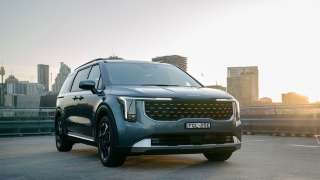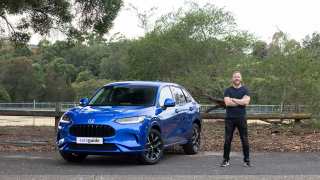
Used MG MGB review: 1963-1970
- MG B
- MG B 1963
- MG B 1964
- MG B 1965
- MG B 1966
- MG B 1967
- MG B 1968
- MG B 1969
- MG B 1970
- MG B Reviews
- MG Reviews
- MG Hatchback Range
- MG Convertible Range
- Hatchback
- Convertible
- MG
- Used Car Reviews

The MGB was greeted with great excitement when it arrived here in 1963. It was the latest in a long line of sports cars from the British maker that had come to define the very essence of what a sports car should be, but the B also caused a sensation because it was such a shift from MG tradition.
Earlier MGs were stripped down to the bare minimum and had a ride that threatened to shake the fillings from your teeth, but the B was as smooth as silk. MG traditionalists were aghast at this newcomer, which they regarded as soft and for sissies.
Model Watch
The B was MG's first unitary construction car, resulting in a much stiffer vehicle with more predictable and precise handling. It was also pretty, with long nose and stubby tail proportions, and clean, uncluttered lines.
The engine was a BMC B-series four-cylinder of 1.8 litres capacity. It was a long-stroke unit with pushrod-actuated overhead valves and twin SU carburettors.
The B put out 71kW of power at 5500 revs and 145Nm of torque at 3500 revs, enough to push the 920kg roadster to 97km/h in 11.3 seconds and through the standing 400m sprint in 18.2 seconds. The transmission was a four- speed manual with synchromesh on the top three gears and a precise gearshift.
It had independent front suspension with coil springs and lever-type hydraulic shock absorbers, while at the rear it had a live axle slung from semi-elliptic leaf springs and lever-type shocks. The brakes were quite good, with solid discs at the front and drums at the rear.
Rack and pinion steering was direct but precise, with quite good feel. There were wire wheels, 14 x 4.5 inches. The tyres were radials. Inside, the B was quite roomy by sports car standards. It had a broad cockpit with black-trimmed buckets either side of the centre tunnel.
There was a thin, wire-spoked steering wheel and a full complement of gauges. A smoother engine, with five main bearings instead of three, was launched in 1965, and an electrically operated overdrive gearbox followed in 1968. Later that year BMC released the Mk II B with an all-synchromesh gearbox.
In 1970 the B was replaced by the restyled L, which ran through to 1972 when British Leyland ended local production. The B continued in production in England until the 1980s.
Some of these later cars, referred to as rubber bumper cars because of their American crash bumpers, have been imported, but don't have the same appeal.
Owner's views
Jim Bradley was attracted to the MGB when he saw one zipping around his hometown, Woodend. As an 18-year-old he bought a three-main-bearing '64 model, which caused him nothing but trouble, but looked charming. Ten years later he restored his father's B, which was in a very poor state. He enjoys the characteristic engine note, reasonable performance and handling.
The bottom line
Smooth-driving and affordable sports car that won't send you broke if it breaks down. Very good club scene offers plenty of fun, social motoring.
Rating
15/20
Pricing
| Year | Price From | Price To |
|---|---|---|
| 1970 | N/A | N/A |
| 1969 | N/A | N/A |
| 1968 | N/A | N/A |
| 1967 | N/A | N/A |
| 1966 | N/A | N/A |
| 1965 | N/A | N/A |
| 1964 | N/A | N/A |
| 1963 | N/A | N/A |
Range and Specs
| Vehicle | Specs | Price* | |
|---|---|---|---|
| Sports | 1.8L, Leaded, 4 SP MAN | No recent listings | 1963 MG B 1963 Sports Pricing and Specs |






